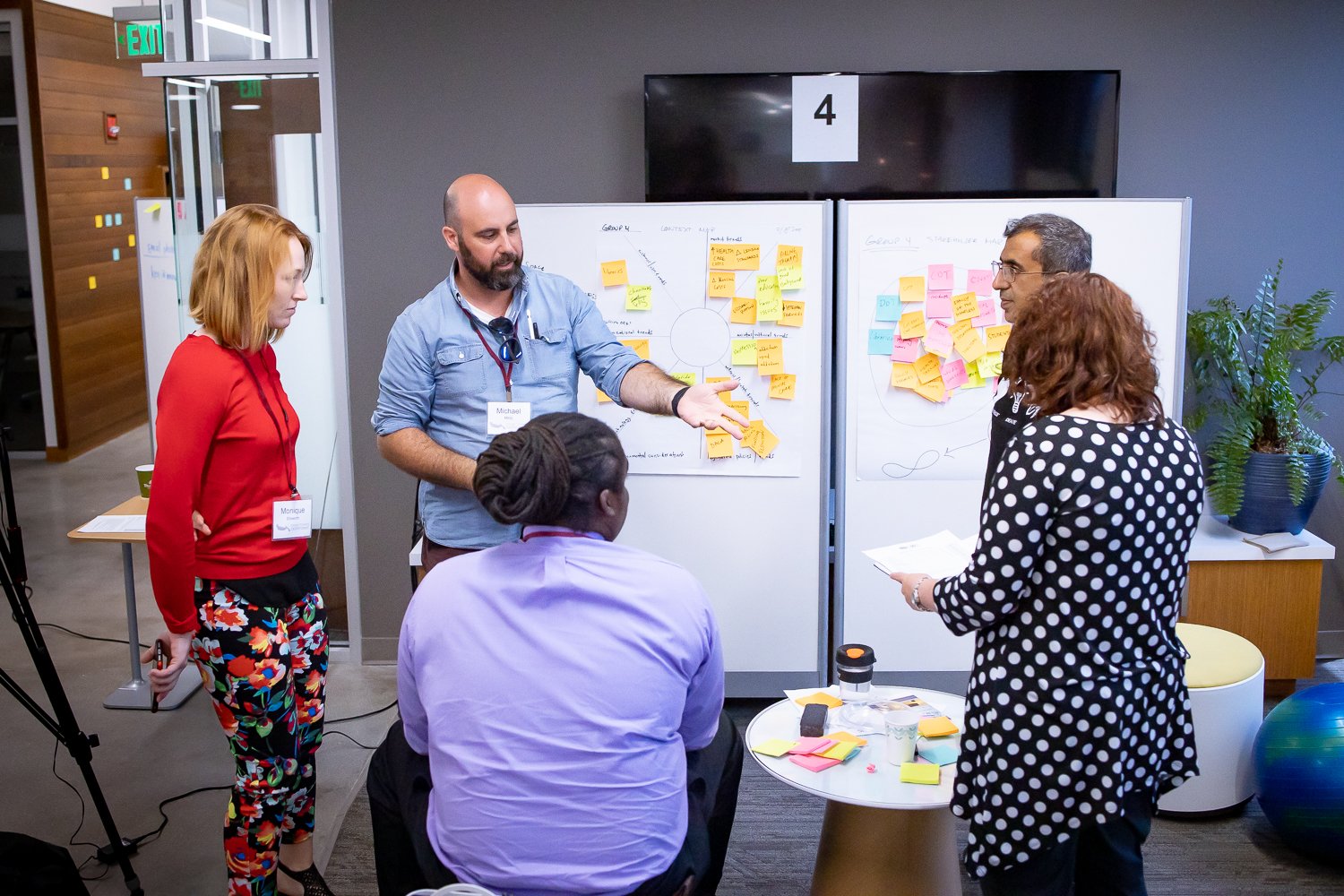
Scientific Innovation Strategies:
Design Sprint
Prototype
In order to best communicate your brilliant solution to the world you must bring it out of your head and into the visible world as a prototype. Prototypes are born in simple, basic, form (low-fidelity) - where they can be critiqued fearlessly, and are iterated and refined to perfection.
MVP
Storyboarding
Key Features
Agree on key features needed for a minimally viable product and how you might implement them. List them on your Miro board.
Have ALL group members take 10 minutes to create their own individual storyboards using post-its for the image frames telling the story of your solution.
Once finished each member, shares their prototype with their own group.
After all have talked through their prototypes, decide on the best one, or the best elements from all and create one final group storyboard.
Get to Prototyping!
Tips:
Pick the right tools
Divide and conquer
Shared workspaces
Put it together
Do a trial run (or 5!)
Seek feedback
As Jake Knapp illustrates in his book Sprint, it takes a lot of time, effort (and money!) to get a prototype real enough to test.
Your job during this sprint is to get to “real enough to test” to get feedback from key stakeholders and refine. You will then pitch your solution prototype to get time/resources to make your solution a reality.


